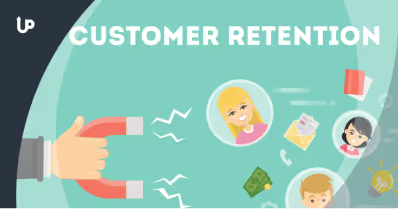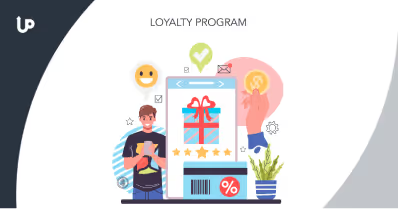While it might seem like a brand community is simply all about interacting with your fans and customers, the reality is that it is a business strategy. In other words, community-building can help you achieve your business goals by serving the people in it.
In fact, some of the most successful companies — Starbucks, for example — have done an amazing job of keeping people coming back for more.
This guide shows you the importance of a brand community, why you should have one (if you haven’t started yet), and tips to build and maintain it.
What is a Brand Community?
A brand community describes a group of customers and fans who are emotionally invested in your business. These individuals strongly believe in your product or service, talk about them to their friends and family, and look forward to reading or watching your content.
A good example of a brand community is UpViral’s private Facebook group where our users share their giveaway campaigns, ask questions, and share tips with others who need help.

Keep in mind that in brand communities, people have already gotten past the “brand awareness” stage, in which they’re simply aware of your business. These people are more likely in stages 3 and 4 of the marketing funnel — namely, the Decision and Action stages where they’re highly engaged.
What Makes a Good Brand Community?
Every thriving brand community possesses the following characteristics:
- Helpfulness: To thrive, brand communities should focus on meeting their audience’s needs. Whether they’re trying to navigate your product as new customers or need your advice on a topic, always be ready to jump in.
- Involvement: Everyone in a brand community plays a role, not just the business owner. For example, certain community members become “go-to gurus” in a specific topic or skill, while others are great conversation starters. The deeper the involvement, the more gaps are filled, which improves the community overall.
- Sharing: Strong brand communities have members who proactively share about the brand with their own social circles. However, to leverage the power of sharing, it’s important for brands to provide value. This can be in the form of a contest or giveaway, a loyalty program, a free ebook, training, or a course.
- Positive: Last but not least, successful brand communities assure people that they can share their ideas and ask questions without feeling judged or ridiculed. As the leader of your brand community, you play a big role in making sure that your community is a positive place to be in. We’ll show you how in a while.
Give your fans and customers reasons to stick around with these brand community characteristics. If you’re not sure whether you need one, keep reading.
Why Your Business Needs a Brand Community
Why are brand communities important? Creating and maintaining a group may sound like a ton of work (especially since you’re spending time on many things to keep your business up and running) — but here’s how it can make a difference:
Increase the reach of your content.
You may be putting out lots of educational content such as blog posts, videos, and podcast episodes. While optimizing them for search engine visibility (SEO) is important for long-term results, you can promote them instantly by sharing them with people who already know, like, and trust you. That’s your community!
Collect feedback.
Engaged communities can be a source of insight or feedback for improving your product or service. You can ask your audience directly (by running a quick poll or survey) or gather data indirectly by paying close attention to their conversations.
Improve customer retention.
Customers greatly appreciate it when their problems are solved and that they’re kept in the loop about new improvements. Having a brand community gives you opportunities to connect with them regularly, whether to provide updates or respond to their concerns.Related post: Loyalty Marketing Strategies to Retain Your Customers
How to Build and Maintain a Brand Community
Now that you’ve learned what makes a brand community and why it’s beneficial for you, here’s how to set it up and keep everyone engaged.
1. Identify the purpose of your brand community.
The first step in creating a community is deciding on your purpose.
To put it simply, think about what you hope to accomplish through that community that will contribute to your growth and your customers’ growth. Are you starting it to collect user feedback? Boost loyalty or retention? Establish yourself as a credible source of information in your niche? Collect user-generated content?
Of course, you can set as many goals as you like, as long as these community goals are clear and realistic. They set the tone for your strategy — like, for instance, they help you plan what kind of content to post (the topic, format, etc.) and how often to do it.
2. Choose your online platform.
While some brand communities come in the form of Facebook groups, yours doesn’t have to be. First and foremost, consider where your audience is already spending their time so you can meet them there.
Popular brand community examples include:
Loyalty programs
Loyalty programs are built for the purpose of encouraging customers to keep on doing business with you.
Starbucks, for example, has a rewards program with nearly 20 million members. This coffeehouse chain rewards its loyal customers by giving away stars ⭐ at every purchase. As these stars add up, they can then be used to redeem free food and drinks! With this brand community, customers are able to enjoy their favorite coffee brand while also saving money down the road.

💎Pro Tip: At UpViral, you’ll be able to set-up your own rewards program (or a recurring campaign) where you reward you automatically reward your audience for sharing your brand with their friends and family. It’s a great way to start a brand community or grow an existing one! Moreover, you’ll be able to add up to 10 custom fields that allow you to gather data from participants. Learn more how UpViral works here.
Forums
Your brand community could also be in the form of a forum or a discussion board. In addition, forums are beneficial for brands with a massive audience. Here’s an idea: If your business is in a broader niche, like fitness in general, for example, you can categorize your forum into more specific topics.
Spotify has created Spotify Community, a place where its audience can discuss music and podcasts, as well as get customer service support. Spotify takes also keeps their users in the loop by mentioning how many conversations took place, questions were answered, and new ideas generated in the previous week. Have a look at the screenshot below:

Hashtags
Branded or campaign hashtags can form communities, aside from amplifying the reach of your content. Specific hashtags are great for building private communities (exclusive to your business) and making sure that all content shared using a specific hashtag is relevant.
As an example, you probably can recall the #IceBucketChallenge, an activity where someone poured ice water over another person’s head to raise awareness for the disease ALS.
Third-party platforms
Business owners can use a third-party platform like Slack to unite its potential and existing customers. Slack has the necessary features for building and maintaining communities, such as channels and threads. Plus, you can have as many people join even with a free plan.
💎Pro Tip: After you’ve built your brand community, make sure that it’s easily accessible. Mention about it from your other channels like your blog (write a blog post), your podcast, emails, and social media posts. In fact, link to it from your website footer to boost its visibility.
3. Create community guidelines.
Guidelines are imperative for any community. They let members know how they’re expected to behave in a way that maintains respect and peace within the group. Your guidelines can include things like:
- The goals of your brand community
- Tips on how to treat and respond to other community members
- Which actions will result in a ban (such as violent comments or discrimination)
- The kind of posts that will be removed or unapproved because they go against your guidelines
- Your review and approval process
Establishing guidelines in place helps you build a strong community where members feel a true sense of belongingness.
4. Position your best users as thought leaders.
As your community grows, you’ll start noticing people’s strengths shine. In fact, some of them will often share their successes from using your product or service, or applying the advice you’ve imparted.
In our UpViral community, for instance, we make sure to position our best users as experts. We find out which UpViral users have used our tool to successfully generate leads (and sales), then we invite them to our weekly Co-Pilot show to discuss their strategies.
Then, we put together a case study which we share on our blog and within our private Growth and Marketing Facebook group. It’s one way of ensuring that our community members keep on learning and growing with us!

5. Keep the engagement going.
Last but not least, the best way to maintain a community is to engage with it. Luckily, there are many ways to maintain engagement, such as:
- Posting photo quotes that inspire and motivate
- Telling personal and brand stories that connect
- Running a monthly giveaway using UpViral (like what Terry Mitchell does)
- Posting surveys or polls
- Responding to your members’ questions
It’s nearly impossible to serve your group well without getting outside help, especially if your group is growing fast. In that case, consider hiring someone who has the skill and experience to interact with people, is flexible, and unbiased.
Final Thoughts
If you’re thinking of starting a brand community, hopefully this article guides you. It’s an opportunity to gather insights that will help your business, boost retention, and get more eyeballs on the content you’re already putting out. Make your brand community last through regular engagement and letting members know what’s expected of them (through guidelines).
Want to try UpViral? UpViral can be used as one of your tools for growing your community. Attract relevant leads and reach other business goals through exciting rewards. Get started for only $1 here!





.png)